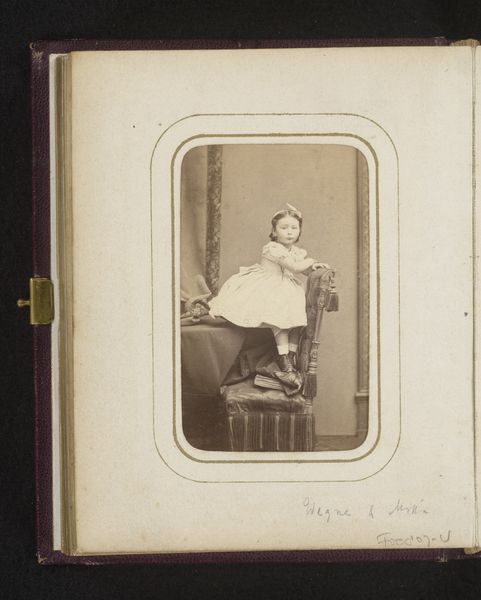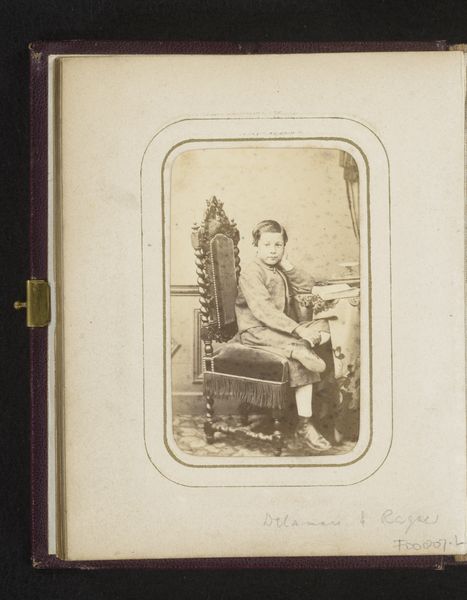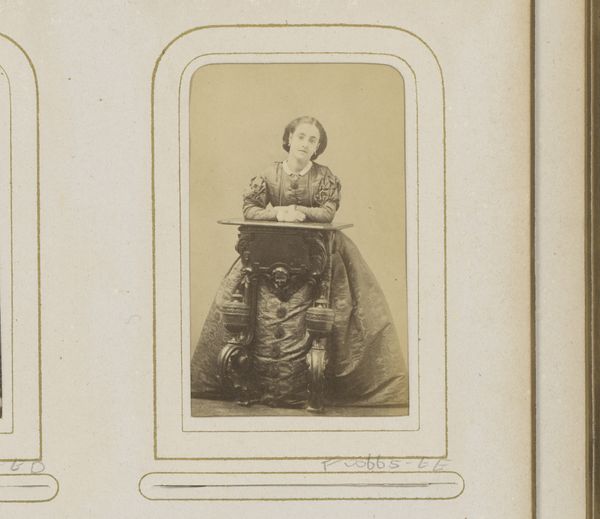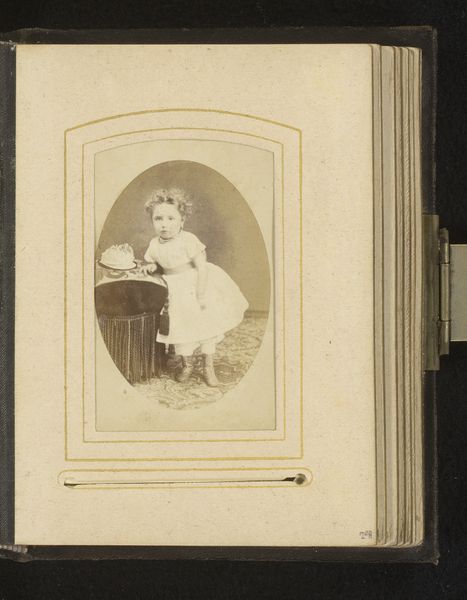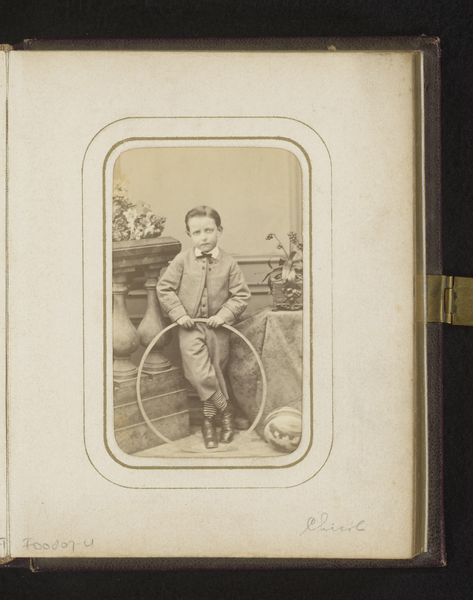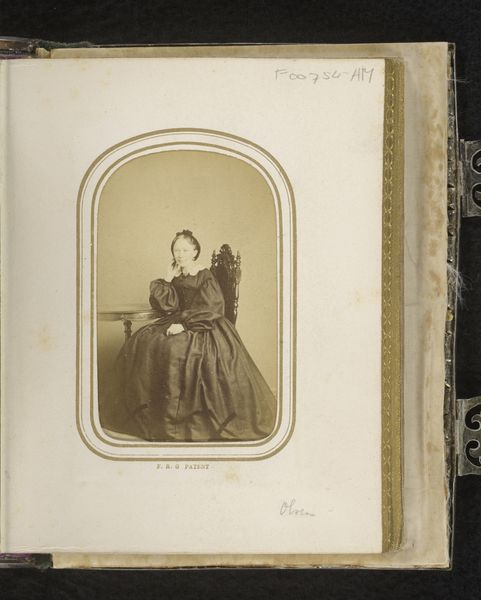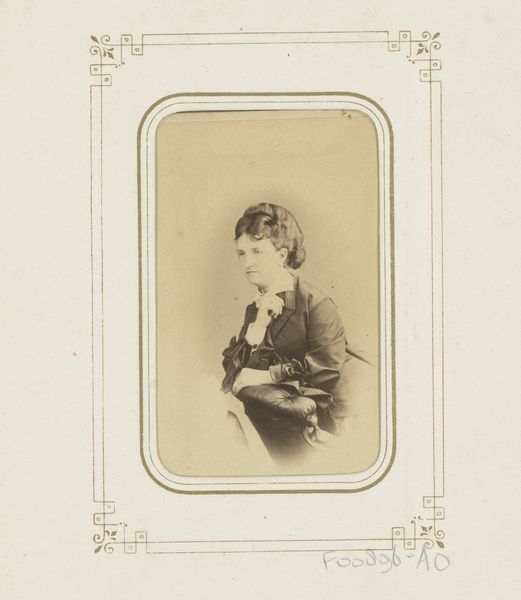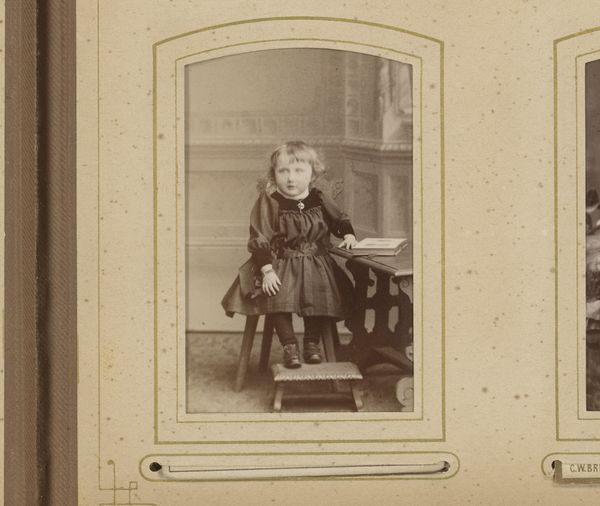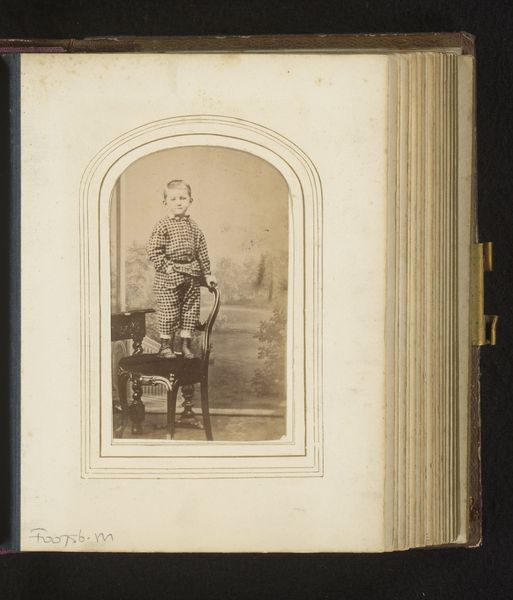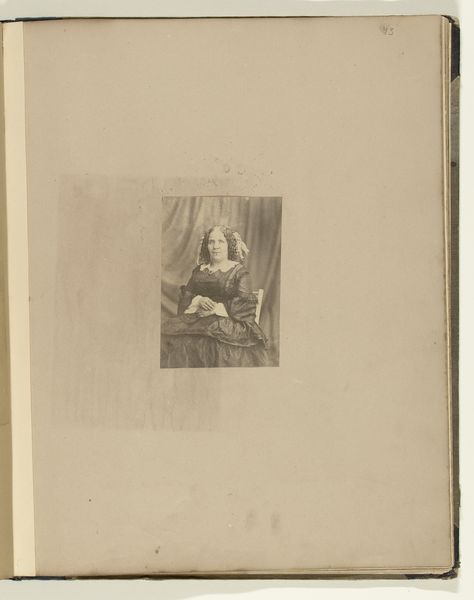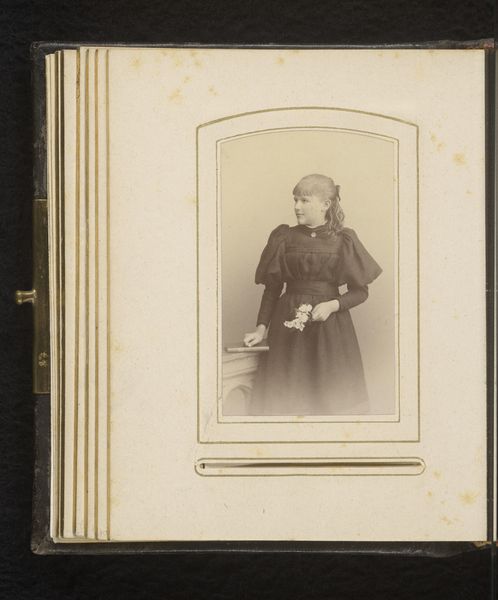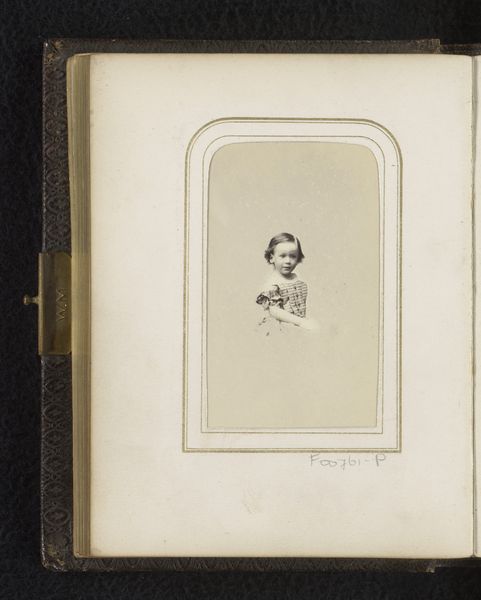
Portret van een meisje, zittend op een verhoging achter een stoel 1857 - 1864
0:00
0:00
photography, gelatin-silver-print
#
portrait
#
photography
#
gelatin-silver-print
#
19th century
#
genre-painting
#
watercolor
Dimensions: height 84 mm, width 52 mm
Copyright: Rijks Museum: Open Domain
Curator: Standing here before us is a photograph, made sometime between 1857 and 1864, called "Portret van een meisje, zittend op een verhoging achter een stoel"—or "Portrait of a girl, sitting on an elevation behind a chair". The studio is credited to Wegner & Mottu. Editor: What a somber little portrait. Even with the relatively soft focus of the gelatin silver print, I get the impression of a weighty stillness about her. It feels... carefully arranged. Curator: Absolutely. Portraiture, especially photographic portraiture in the 19th century, had this incredible tension between capturing an individual likeness and also presenting them in a way deemed proper or socially acceptable. The elevation, the somewhat severe chair...it’s all calculated. Editor: Indeed. I mean, the child is positioned almost like an object, not quite comfortable. Notice her little feet peeking out? There’s something both precious and unsettling about that positioning. It suggests a deliberate attempt to manage or contain her childhood vitality. Do you think it succeeded? Curator: Oh, I don’t know. Maybe it’s more about establishing a presence, a record. It reminds us how photography democratized portraiture. Suddenly, people who couldn’t commission oil paintings could leave a visual legacy. This girl, even nameless to us, occupies a place in history now, viewed in institutions such as this, the Rijksmuseum. Editor: And it's our job to grapple with the politics behind these glimpses into the past, isn't it? Thinking about access, who gets seen, and what purpose these images served. Beyond the sitter, what did it mean to the makers, Wegner & Mottu, for example? Was it an expressive enterprise? Or a practical business? Curator: Probably both, interwoven as such things always are. We search for authentic experience and self-expression in all art, maybe imposing values across the decades that just don't apply in this exact case. Editor: I agree entirely! I was swept away in analysis and social critique! Backing away for a second I see the quiet charm here... We project our emotional experiences onto it and find threads to discuss that run deeply into all portraiture, all captured art... Curator: Perfectly put. These images are more than records; they are living conversations we have with history, with each other, and ourselves.
Comments
No comments
Be the first to comment and join the conversation on the ultimate creative platform.
